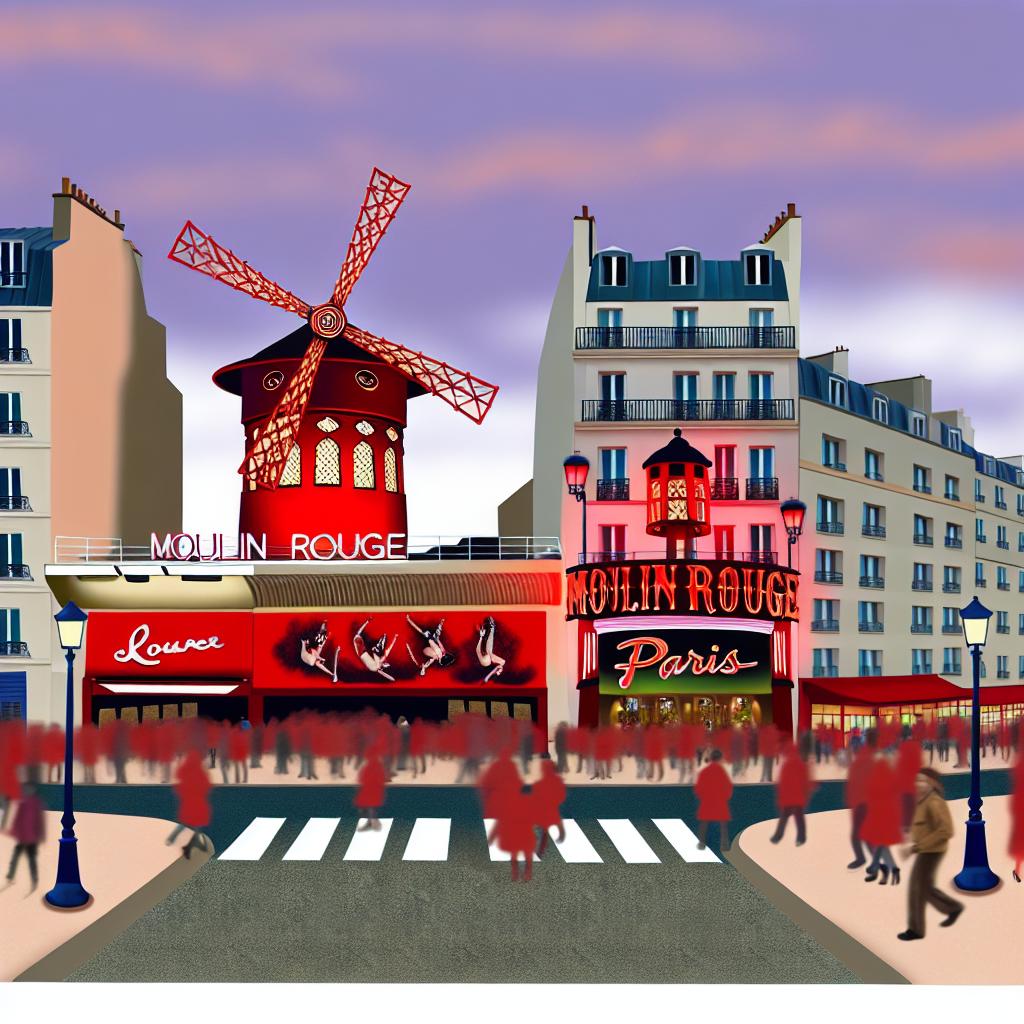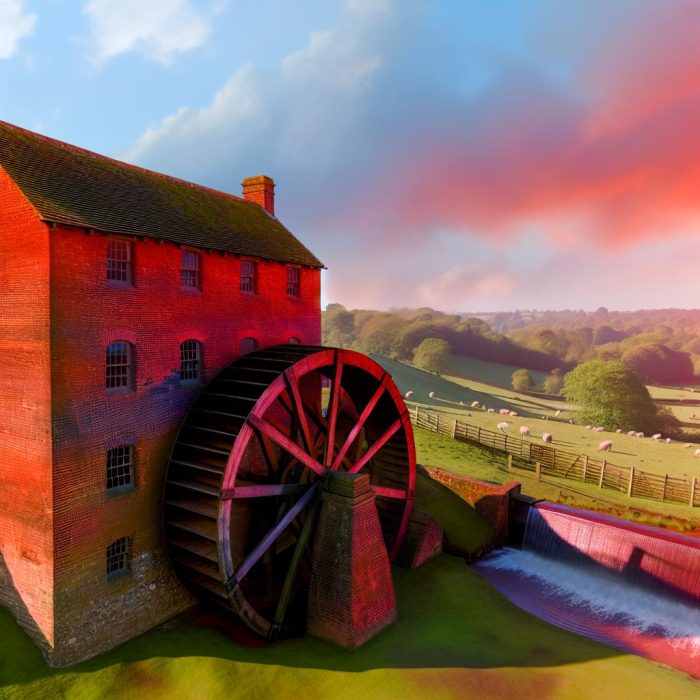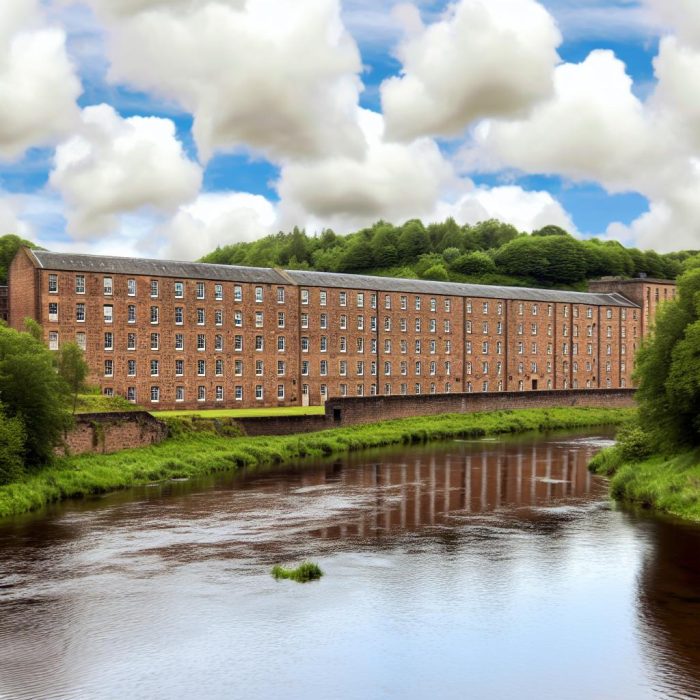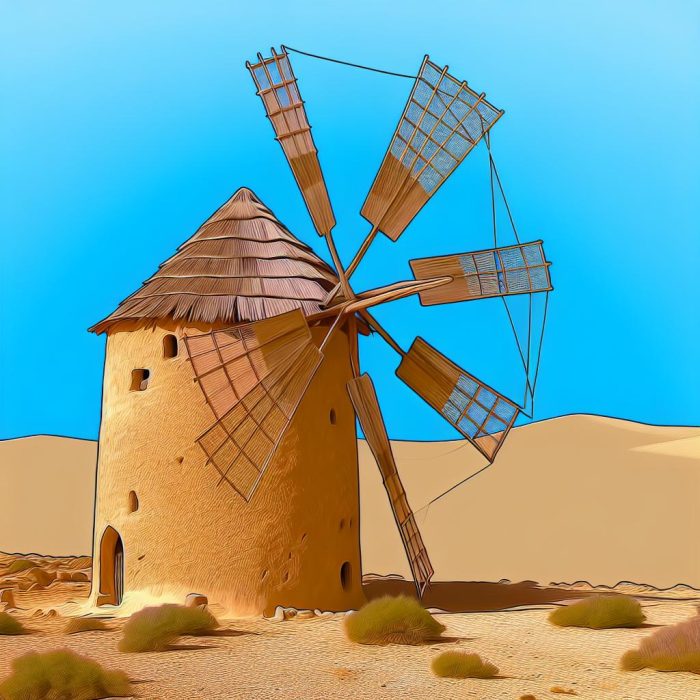The History of the Moulin Rouge in Paris
The Moulin Rouge, located in the Pigalle district on Boulevard de Clichy in Paris, is an iconic cabaret known worldwide. Established in 1889 by Joseph Oller and Charles Zidler, the venue quickly gained a reputation for its extravagant shows and lavish interiors. The founders aimed to create a venue that would be a “palace of women” and a stronghold of entertainment, catering to the delight of Parisians and tourists alike.
Architectural Design and Unique Features
The architecture of the Moulin Rouge is notable for its distinctive red windmill positioned on its roof, which has become a symbol of the cabaret. The establishment is designed with rich, extravagant decor that evokes both opulence and comfort, intended to allow people from all walks of life to feel free and enjoy themselves in a convivial atmosphere. Visitors encountering the rich décor are greeted by elements like mirrors, velvet seating, and elaborate stage designs that create magnificent surroundings for the performances.
To further appreciate the history and evolution of the Moulin Rouge, it is essential to delve into its architectural magnificence. The red windmill at its façade is not just a decorative element but a nod to a (then) popular entertainment venue of the Parisian outskirts—making it instantly recognizable. Walking through the doors of the Moulin Rouge represents a journey into a world where fantasy meets reality.
The Emergence of the Cancan Dance
The French cancan, a dance that integrates high kicks and acrobatic movements, flourished and gained fame through its association with the Moulin Rouge. This dance, an exuberant and often provocative performance, became synonymous with the cabaret and served as a significant draw for audiences eager for entertainment. It inspired both cultural shock and fascination, carving its identity into dance history.
Performed by a chorus line in dazzling dresses designed to emphasize the dancers’ energetic movements, the cancan’s choreography is a vivid burst of activity and colors. The dynamic display of costumes, incorporating vibrant hues and lively motifs, provides a visual delight that completes the dance’s immersive appeal. Today, the cancan remains one of the timeless signatures of the Moulin Rouge, ensuring its place as a symbol of Parisian joie de vivre.
Notable Performers and Shows
Throughout its illustrious history, the Moulin Rouge has been graced by a plethora of renowned artists who contributed to its international acclaim. Among them was Mistinguett, a celebrated figure in French entertainment, whose performances helped to establish the venue as a pivotal site for cabaret artistry. Her timeless influence remains imprinted in the history of the cabaret.
The venue has also been a preferred stage for global megastars such as Frank Sinatra and Edith Piaf, whose contributions transcended borders. Each performance at the Moulin Rouge added layers of artistry and reach, as these artists brought their unique flair and draw to an audience eager for fresh, diverse experiences.
In addition to showcasing musical talents, the Moulin Rouge hosted theatrical spectacles. These shows pushed the boundaries of traditional entertainment and were characterized by their creativity, innovation, and showmanship, marking the cabaret as a center for pioneering performances.
The Moulin Rouge Today
In the present day, the Moulin Rouge endures as a treasured cultural institution, epitomizing a mix of historical charm and modern excitement. For those intrigued by the current lineup of shows and events, the Moulin Rouge official website provides comprehensive details. As much as it embodies tradition, the venue continuously evolves its offerings, experimenting with new ideas while preserving its foundational identity.
Today, the Moulin Rouge serves both as a magnet for tourists and as a beloved landmark for Parisians. Its performances are not merely continuations of a storied past but also a testament to its dedication to pushing creative limits. The shows currently presented boast a blend of continuity and innovation, ensuring that the cabaret retains its perennial relevance as an entertainment stalwart.
Conclusion: The Moulin Rouge has played a significant role in the history of entertainment, not just in Paris but worldwide. Its commitment to spectacle, rich history, and cultural impact make it a must-visit for anyone interested in the performing arts. The cabaret’s legacy continues to flourish, inviting new generations to experience a slice of Parisian enchantment, steeped in history yet alive with the vibrant promise of contemporary art and performance.



